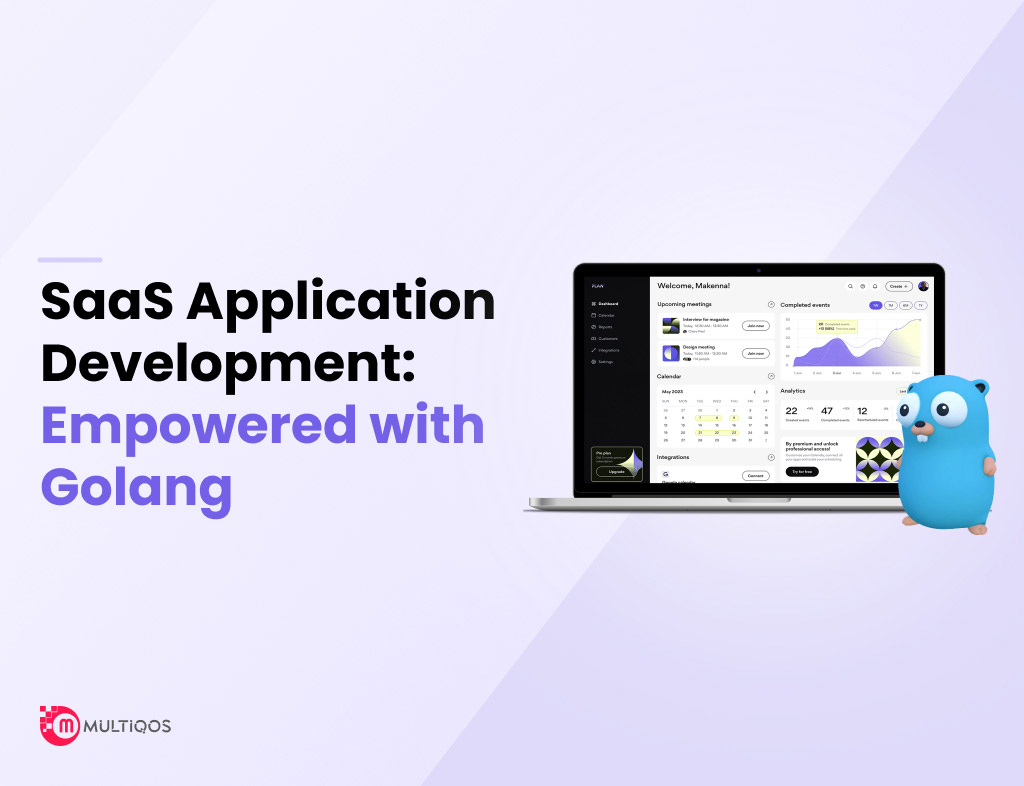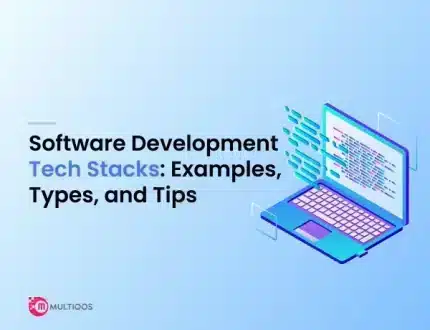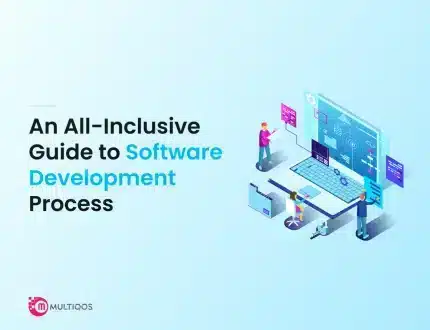Golang: The Game-Changer for High-Performing SaaS Applications

Building A Saas Application With Go is becoming more and more common due to its scalability, versatility, and affordability. Golang is an excellent programming language for SaaS services, and incorporating it can result in high-performance processing and secure and dependable solutions. End customers can access software programs online thanks to the cloud-based software delivery paradigm, Software-as-a-Service (SaaS). In a SaaS model, the service provider keeps the software up-to-date, housed on remote servers, and made accessible to clients through web browsers, mobile apps, and APIs.
In comparison to conventional software distribution models, SaaS offers a variety of advantages to users, including lower initial costs, expansion, adaptability, and availability. A multi-tenancy architecture shares a single, shared platform and code base centrally updated by all SaaS vendor clients and applications. Users can easily customize applications to meet their unique business processes without having an impact on the shared infrastructure. A SaaS approach supports and maintains the distinct customizations and changes each user and business makes through routine updates.
Programming in Golang blends the simplicity of dynamic languages with the dependability and security of statically typed languages. It has greatly increased in popularity in recent years due to its unique qualities and advantages. The language is simple to learn and understand, making it accessible to programmers of all skill levels. The concise syntax of Golang decreases the level of detail of the programming, makes it simpler to understand, and encourages maintainability.
Benefits of Golang for SaaS Application Development
-
Efficiency and Performance
Golang is a high-performance programming language that promises efficient execution and a tiny memory footprint. It converts to machine code, enabling rapid execution and effective use of resources. Golang’s garbage collector efficiently manages memory, reducing the likelihood of memory leaks and ensuring smooth application performance. The networking, built-in support for concurrency, and effective data structures in Golang’s standard library further improve application speed.
-
Concurrency and Scalability
Concurrency is natively supported in Golang For SaaS Development via goroutines and channels. Developers can efficiently use the resources at hand by executing quick concurrent activities using goroutines. In SaaS applications, channels facilitate secure data transfer and communication amongst goroutines, facilitating the management of concurrent activities. Golang’s concurrency mechanism simplifies developing highly scalable programs that can effectively utilize multicore CPUs and manage several concurrent requests.
-
Safety and Reliability
Golang’s rigorous syntax and strong type system make SaaS apps more trustworthy and less likely to experience runtime issues. The strict error-handling features of the language make it easier to write reliable, resilient programs. The thorough testing and performance optimization that Golang’s integration testing infrastructure and measurement tools enable raises the dependability of SaaS services.
-
Developer Productivity
Golang’s clarity and simplicity make it simple to learn and comprehend, enabling programmers to produce code fast and effectively. The complete functionality offered by the Golang standard library lessens the need for external dependencies and boosts golang development services and their efficiency.
SaaS Applications- Key Components
-
User Management and Authentication
SaaS Applications With Go can manage user registration, authentication, and authorization. It has features including password management, role-based access control, user profile management, and user onboarding. User data is safeguarded, and application access is secure thanks to authentication methods, including username/password, social login (OAuth), and multi-factor authentication.
-
Data Storage and Management
SaaS applications need strong data management and storage capabilities. This includes picking the best databases and storage options based on the application’s needs. For effectively storing and retrieving application data, relational databases (like MySQL and PostgreSQL) or NoSQL databases (like MongoDB and Redis) are frequently utilized.
-
Integration with Third-Party Services
SaaS programs typically need connections to third-party services to improve functionality, add new functionality, or share data with external systems. SaaS applications can use RESTful APIs, SOAP APIs, or other protocols to share data with external services. Payment gateways, email, messaging, social networking platforms, cloud storage providers, and any other services pertinent to the SaaS Application With Go needs can all be integrated.
-
Scalability and Load Balancing
SaaS solutions need to be scalable to accommodate rising demand from customers and maintain performance. Load balancing ensures that incoming requests are efficiently distributed among several servers or situations, preventing any one component from becoming overburdened. SaaS applications may grow dynamically and deal with variable workloads thanks to horizontal and vertical scaling strategies.
Case Studies: Successful SaaS Applications Built with Golang
Some of the successful case studies are enlisted below:
-
- Golang is a key component of Kubernetes, the well-known open-source container orchestration software. Golang is the perfect solution for managing the challenging process of managing containerized applications across a cluster of servers due to its concurrent capabilities and performance. Kubernetes’ ability to scale applications, tolerate load balancing, and offer fault-tolerant and self-healing abilities is greatly influenced by Golang’s capacity to handle high levels of concurrency and efficiently control resources.
-
- Golang is used for building distributed applications with go and InfluxDB, an episodic database intended for processing large amounts of time-stamped data. Golang is a great option for quickly processing and storing massive volumes of time-series data due to its performance and efficiency. InfluxDB can effectively handle concurrent read and write operations thanks to Golang’s concurrency support, and the strong type system guarantees the accuracy and dependability of the data.
Also Read: Why Golang is a Best for Your Next Project
Why Choose MultiQoS for Saas Application Development?
-
- MultiQoS concentrates on performance optimization to outstanding user experiences. It uses resource allocation, request routing, and intelligent load-balancing techniques to ensure system resources are used effectively, leading to quicker response times and enhanced application performance.
-
- We strongly emphasize Golang for software development and high availability and fault tolerance to guarantee that SaaS applications receive ongoing service. Regardless of the face of hardware or software failures, we use reliable redundancy mechanisms, detection of errors, and automatic failover strategies to reduce downtime and maintain continuous availability.
-
- We can build web application with Golang and uses adaptive resource management to allocate resources to maximize performance and financial viability judiciously. It dynamically distribute computer resources by analyzing workload patterns and objectives to maximize resource utilization and save infrastructure costs.
-
- We enable detailed customization of the QoS settings. hire dedicated golang developers from us. According to them, significance, criticality, or business needs provide flexible configuration choices to give specific components, users, or transactions the highest priority. This makes it possible for SaaS providers to customize their service standards to fit the demands of particular applications and users.
-
- SaaS applications can handle increasing user demands without sacrificing performance thanks to our seamless scalability and elasticity. To guarantee optimum performance during periods of high demand, we have auto-scaling options that dynamically modify the allocation of resources based on workload fluctuations.
Conclusion
Golang offers excellent performance and effective resource management. It has native concurrency support, enabling the execution of scalable, concurrent applications. The emphasis on dependability and safety is emphasized by stringent error handling and static typing. Its simplicity, extensive standard library, and sophisticated tooling increase developer productivity.
Looking for a dedicated Golang developer?
MultiQoS has expert Golang developers who provide efficient solutions for both large and small enterprises.
FAQ about SaaS App Development with Golang
Golang will run you between $10,000 and $100,000 to construct a SaaS application. But it can change based on the demands.
Yes, there will be some difficulties in adopting Golang to construct the SaaS application, including a learning curve, a lack of third-party libraries, and trash collection.
Stripe and Bitly, are popular SaaS applications that have used Golang.
Get In Touch




